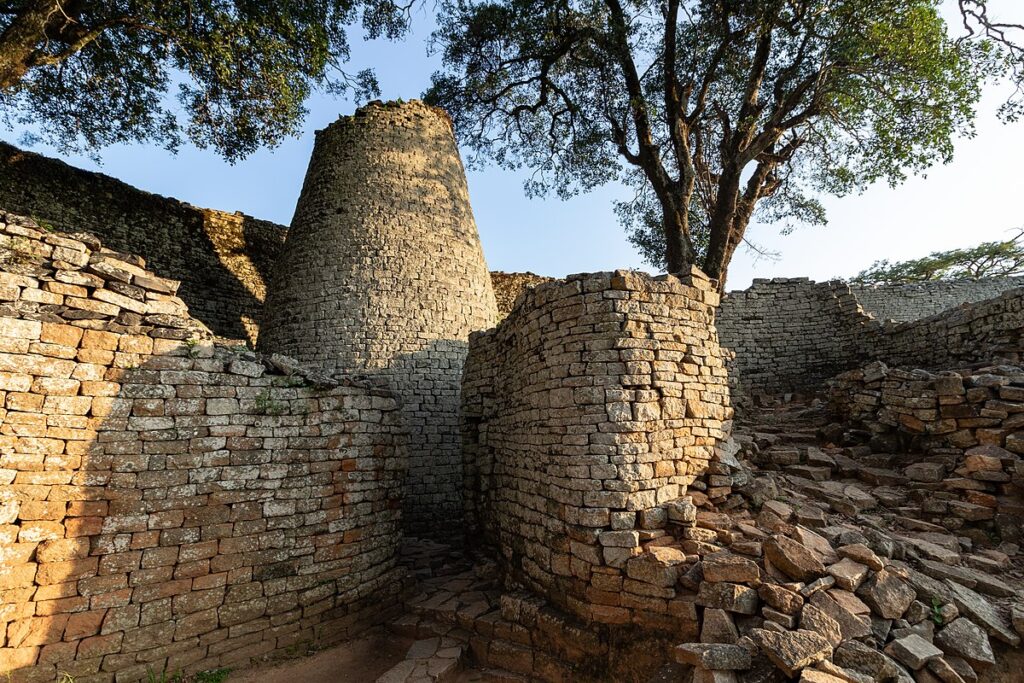
Zimbabwe has a rich history with remnants dating back centuries and archaeological structures only matched by the Great Pyramids of Egypt. Like many proud African nations, Zimbabwe maintains a strong connection with its ancient past. Here are 5 must-see historical sites in Zimbabwe.
Victoria Falls (Mosi-oa-Tunya )
Known as one of the seven natural wonders of the world, Victoria Falls form one of the most spectacular World Heritage Sites. These are among the most spectacular waterfalls in the world. The Zambezi River is more than 2 km wide at this point. The falls plunge noisily down a series of basalt gorges and they raise an iridescent mist that can be seen more than 20 km away.
The Mosi-oa-Tunya/Victoria Falls is the world’s greatest sheet of falling water and significant worldwide for its exceptional geological and geomorphological features and active land formation processes with outstanding beauty attributed to the falls i.e. the spray, mist and rainbows.
This transboundary property extends over 6860 ha and comprises 3779 ha of the Mosi-oa-Tunya National Park (Zambia), 2340 ha of Victoria Falls National Park (Zimbabwe), and 741 ha of the riverine strip of Zambezi National Park (Zimbabwe). A riverine strip of the Zambezi National Park extending 9 km west along the right bank of the Zambezi and islands in the river are all within the Park as far as Palm and Kandahar Islands, with the Victoria Falls being one of the major attractions.
Ruins of Great Zimbabwe
The ruins of Great Zimbabwe – the capital of the Queen of Sheba, according to an age-old legend – are a unique testimony to the Bantu civilization of the Shona between the 11th and 15th centuries. The city, which covers an area of nearly 80 ha, was an important trading centre and was renowned from the Middle Ages onwards.
Great Zimbabwe National Monument is approximately 30 km from Masvingo and located in the Lowveld at an altitude of some 1100 m in a sparsely populated region of the Bantu/Shona people. The property, built between 1100 and 1450 AD, extends over almost 800 ha and is divided into three groups: the Hill Ruins, the Great Enclosure and the Valley Ruins.
Matobo Hills
The Matobo Hills some 35 km south of Bulawayo are a profusion of distinctive granite landforms, densely packed into a comparatively tight area, that rise up to form a sea of hills.
Matobo Hills are famous for their ancient rock paintings, generally attributed to ancient cave dwellers who lived in the land some 2000 years back. These paintings depict a civilization that left little in the way of written records, but some aspects of life in that era may be gleaned from the artwork itself.
The Hills themselves have been enclosed in the stunning Matobo National Park, a place which houses the remains of the great explorer Cecil Rhodes.
Khami Ruins
Khami, which developed after the capital of Great Zimbabwe had been abandoned in the mid-16th century, is of great archaeological interest. The discovery of objects from Europe and China shows that Khami was a major centre for trade over a long period of time.
Khami Ruins National Monument is located to the west of the Khami River, 22 km from the City of Bulawayo. The property is located on a 1300 m hilltop downstream from a dam built from 1928 to 1929. It covers an area of about 108 ha, spread over a distance of about 2 km from the Passage Ruin to the North Ruin.
Khami is the second-largest stone-built monument in Zimbabwe. Its historical importance lies in its position at the watershed between the history of Great Zimbabwe and the later Zimbabwe period. It is one of the few Zimbabwe sites that were not destroyed by treasure hunters and its undisturbed stratigraphy is scientifically important in providing a much clearer insight into the history of the country.
Batonga Museum
According to historical archives, the BaTonga peoples arrived in Zimbabwe in about AD 300. The BaTonga Community Museum contains historical and educational information about the culture and life of the BaTonga people. The museum is located in Binga on the shores of Lake Kariba.
The BaTonga tribe had a culture focused on fishing and growing crops, along with hunting and gathering. This traditional way of life was largely disrupted by the construction of the Grand Lake Kariba, the nation’s largest lake, in 1956. The museum showcases the ways and life of this ancient group of people throughout the centuries.


